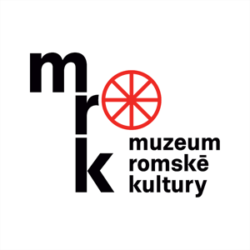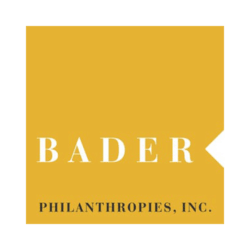Jan Ištvan (1924)
Jan Ištvan, born 1924 in Bořitov, Blansko district
-
Testimony abstract
Jan Ištvan lived with his mother and younger brother František in the village of Doubravice [nad Svitavou]. His mother Karla Ištvanová did casual work, such as in a brickyard, and was later employed in the Sfinx kitchenware factory in Brno.[1]
His father was not Roma and did not live with the family, but he supported his son in his studies. Jan Ištvan attended primary and secondary schools, and then a one-year non-compulsory course, the so-called “fourth grade” of secondary school, at Svitávka. Later, when he was apprenticed as a machine fitter at the Mechana automatic lathe factory in Brno, his father took him in. He remembered that the owner, the engineer Anderle,[2] had a German wife and himself joined the German community later, but he was a good man. After a three-year apprenticeship he returned to his mother and brother in Doubravice, where they lived, he said, in the municipal poorhouse. Even before the war, he felt some discrimination at school and his mother at work because of the colour of their skin.
Jan Ištvan recalls that when he was fourteen years old, the gendarmes came to his school to ask him to pick up his Gypsy identity card in Doubravice, but he did not go there because he had a Kennkarte. He says that some kind of inventory[1] was made by the gendarmes on the orders of the Protectorate authorities in the summer or autumn of 1942; it then served the Germans as a basis for selecting people [for transports].
In March 1943, the family was taken by a prison van to Brno to the collection point in a slaughterhouse. They were only allowed to take the bare necessities. Jan Ištvan was nineteen years old at the time. After four days, he was told that he was free to leave; he believed that it was thanks to the intercession of the engineer Anderle, for whom he had worked. However, he refused to leave his mother and younger brother, and so they were taken in cattle trucks to [the concentration camp] at Auschwitz, where SS officers with dogs and bullwhips were waiting for them. They were taken on trucks to the entrance gate of [Auschwitz II-]Birkenau and all of them were registered again. They spent the first night crammed into a block with no beds, and the next day they were tattooed with a number and herded into the so-called Gypsy Camp. It was cold, and Jan István recalled a pile of dead bodies and a group of lightly-dressed prisoners harnessed to a wagon carrying wood, with the kapos urging them on by beating them.
For the first fortnight, the families were quarantined and stayed in the blocks together. The day always began with a roll call, when everyone had to line up in rows of ten and wait for the Blockälteste to count them and report to the SS man. If the numbers did not agree, the count had to be repeated. The roll calls were thus long and difficult, especially for the older prisoners and children. Those who collapsed from exhaustion were finished, Jan Ištvan said.
The prisoners were given unsweetened coffee in the morning, beet or kohlrabi soup or beet and potato soup at noon, a piece of bread in the evening and a piece of liverwurst or similar twice a week. Only prisoners who had a function (Blockälteste, Stubendienst, Vorarbeiter, kapo) were better off, as well as those who worked in the kitchen and occasionally managed to steal something. Prisoners also stole from the so-called Kanada warehouse , which sorted things out of the luggage of people brought in by transports. Ištvan recalls that a gold ring was worth one loaf of bread, and a wool sweater could be exchanged for half a loaf of bread.
Because he had stated on arrival that he was a locksmith by profession, he was transferred to the main Auschwitz camp in April with other craftsmen and young prisoners.[2] Most of them then worked in the sand pit, with stones, or on construction sites.
He was unable to say goodbye to his mother and brother before he left Birkenau; his mother was in the sick bay and he could not get to her. Later he learned that when the Gypsy Camp was cleared before the Soviet army arrived, the adult prisoners were taken away in transports, but the children had to remain there. His mother wanted to stay in the camp with František and the other children who had been entrusted to her by other women, so she went to the gas chamber with them.
In the main camp at Auschwitz, the Roma were no longer separated from the other prisoners, nor were they separated at Buchenwald, where Jan Ištvan was taken a year later.[3] He spent three weeks in quarantine at Buchenwald, then was deported to Dora and then to Harzungen.[4] He worked in the underground factory where V-1s and V-2s were assembled.[5] Later he was taken to a camp in Ellrich, where conditions were very bad. He became ill there and was given injections. After his recovery, he considered it fortunate that he was transferred again to Harzungen. By that time the front was approaching, so they were given a quarter loaf of bread and a piece of margarine and went on what was called a death march, i.e. they retreated from the front under the supervision of the SS. During the day they walked along the byways, and at night they hid in stacks or barns. Those who fell from hunger or exhaustion were shot. When the front approached, the SS men, followed by the Volkssturm, fled, letting the prisoners go free. Jan Ištvan recalls that he remained sitting in a ditch by the road for some time. An SS man on a motorcycle passed by and asked him what this meant, where the guard was. When he replied that he was gone, the German pulled out a pistol and pointed it at him, but then he waved his hand and left without firing a shot. The next moment American soldiers were coming up the road in jeeps.
The Americans gathered the former prisoners in a nearby village, and commissioned the mayor to house them. Ištvan stayed with a baker's family for about six weeks and was treated well. Then he was transferred to the Soviet occupation zone, spent some time in Magdeburg, and from there they took trucks to Prague.
[1] According to Act No. 117/1927 Coll. on Itinerant Gypsies of 14 July 1927.
[2] This happened either on 4 or 12 April 1943. (ed.)
[3] Transport of 15 April 1944. (ed.)
[4] A branch of the Mittelbau I concentration camp near Nordhausen, where he was held from 11 May 1944. (ed.)
[5] V-1 and Aggregate 4 (V-2) missiles.
After the war, Jan Ištvan returned to his father, who was very moved, although they were not very close. When he told him that he wanted to study more, his father gave him a deposit book with a linked deposit, from which he withdrew money to study at an industrial school. He said it was only then that he finally began to live a normal and peaceful life.
How to cite abstract
Abstract of testimony from: NEČAS, Ctibor, ed. Nemůžeme zapomenout = Našťi bisteras : nucená táborová koncentrace ve vyprávěních romských pamětníků. Olomouc: Univerzita Palackého, 1994. ISBN 80-7067-354-0, 151-159. Testimonies of the Roma and Sinti. Project of the Prague Forum for Romani Histories, https://www.romatestimonies.com/testimony/jan-istvan (accessed 11/6/2025) -
Origin of Testimony
The tape recording and transcription of the recollection were made by Ctibor Nečas on 26 February 1988.
-
Where to find this testimony




